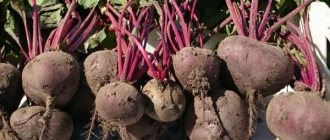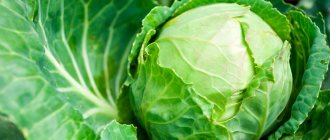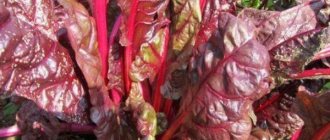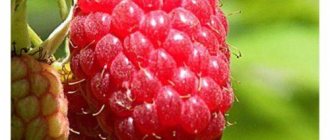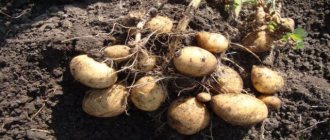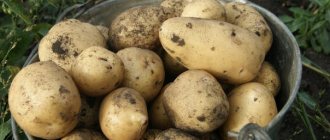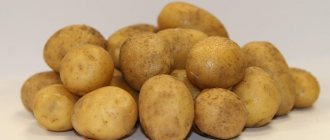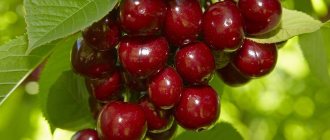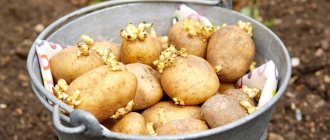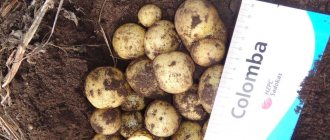Unpretentious beets grow comfortably all over the earth, with the exception of the frozen tundra. Botanists call its ancestral home India and the Far East.
Probably, the nutritional qualities of these root crops were appreciated by primitive people, observing how they were dug up and eaten with appetite by animals.
It is interesting that in ancient times only young beet tops, prepared in different ways, were served at the table, but medicinal tinctures, ointments, lotions and rubs were made from root vegetables.
What was the treatment with beets? For example, they effectively lowered blood pressure.
Centuries of selection
Medieval chronicles first mention certain cultivated types of beets in the 9th century (Kievan Rus and Germany) and in the 12th century (Scandinavia).
It took several more centuries to finally identify a special species - fodder beet. It still has a coarse fibrous quality to this day. Farmers prefer to give tough root crops as livestock feed.
Sugar beets are also the fruit of intensive artificial selection. Her goal was to maximize the concentration of sugar in the fruit pulp. Breeders have achieved approximately 20 percent sugar content in the most successful varieties.
German scientists (18th century) invented the technology for processing sweet root vegetables into sugar, and engineers and industrialists built the first sugar factories in Germany (19th century).
For which animals is fodder beet grown?
This type of root vegetable is suitable for cows, pigs, goats, chickens and even rabbits.
Cows love this vegetable very much. It significantly increases their milk yield and increases the fat content of milk. The daily norm is no more than 18 kg. And 15 days before calving, it is necessary to stop feeding this crop.
For goats the effect is similar. The daily norm for an adult goat is 4-5 kg.
When root crops and beet tops are consumed by chickens , the shells of their eggs become stronger, the yolk acquires a beautiful bright yellow color, and the health of the bird itself improves.
Pigs can be given the vegetable either raw or cooked. Since beets normalize digestion and fat metabolism, eating them by pigs increases their body weight while reducing the amount of fat.
Rabbits actively eat both the tops and roots of beets. It improves the appearance of their fur and the taste of the meat. In addition, digestion and general health are normalized. So, regardless of the purpose of keeping rabbits, beetroot is useful for them.
Visual differences
Modern types of multi-purpose beets have become so visually dissimilar that it is impossible for a knowledgeable person to confuse these root crops.
Here are the main differences between the two varieties of beets, which can be determined by eye, by appearance:
Form
- Sugar - always elongated, resembles an overgrown brown carrot.
- The fodder type is spherical; the root crops of some varieties are slightly flattened or elongated into a cylinder.
Color
- Sugar - practically devoid of pronounced pigmentation, the roots are grayish, pale pastel, sometimes slightly pinkish.
- Fodder - mainly a brownish-gray tint predominates. The colors of some varieties have pronounced shades of red, orange, and pink.
What is the difference between the types?
| Comparison criteria | Stern | Regular (dining room) | Sugar |
| Appearance |
|
|
|
| Chemical composition |
|
|
|
| Soil requirements | Definitely fertile. If the soil is poor, fertilizing and fertilizing is necessary. It is desirable that corn and legumes, vegetables, and cereal crops grow in the place where beets are sown. Chernozem, solonetzic and slightly alkaline soils are welcome. | Loose and fertile soil is required. Loamy chernozems and peat bogs are perfect for this species. Acidity is very important (it should be neutral or slightly alkaline). You cannot sow beet seeds in beds that have been covered with fresh manure. | Air and moisture should move easily through the sugar beet soil. A soil horizon that holds water at a depth of 0.6-0.8 meters will simplify cultivation and make it more convenient, and the beets will be of high quality. Suitable soils include chernozem, peat bogs and gray soils. It is advisable that winter barley and wheat grow at the planting site before sugar beets. |
| Productivity | With proper care, the yield can reach twelve to thirteen thousand fruits per hectare (30-60 tons). The new varieties that were developed especially distinguished themselves:
| Forty to fifty tons per hectare can be achieved by table beets with proper care. Leading varieties:
| The choice is between fruitful or sugary varieties, but there is no strict relationship between them (approximately 18-30 tons per hectare). The best yield was observed in the following varieties:
|
| Purpose of cultivation | Fodder beet is a natural milk extractor. Due to its high protein content, it is used as animal feed. The quality of milk yield results increases. | Breeders struggled for a long time to obtain a delicate and pleasant taste of beets. Table beets were specially created and grown for the human table. It has the most pleasant taste. | Sugar beets are widely used in the production of sugar and black molasses confectionery. It is the main resource in Russia from which sugar is made. |
| Growing season | On average, the growing season of fodder beet lasts 4-5 months. It blooms in yellow-green inflorescences, including two to six small flowers. | The growing season of early ripening varieties is 2-3 months; mid-ripening varieties ripen in 3-4 months, and late varieties have a growing season of over one hundred days (longer than three to four months). | The seedling becomes a fruit-bearing vegetable in 5-6 months. Each inflorescence (whorl) contains 2-6 small yellow-green flowers. |
| Care and cultivation technology | Loosening of the soil is carried out after rains, a few days after planting. Until the beet tops close, weed control is carried out: weeding is necessary several times during the growing season. A month before digging beets, you should avoid watering completely. When there is heavy rain, gaps are created between the beds to drain water. To protect against pests, mineral fertilizers are used, and before planting beets, nitroammophos is added to the soil. | At the initial stage of growth, you need to feed the sprouts with nitrogen, then switch to potassium compounds (wood ash). Beets love moisture and need regular watering, but it is important to avoid overwatering. When the sprouts form a second leaf, you need to start loosening the soil. At the same time, you can thin out the seedlings. The second thinning is recommended to be done in July, leaving ten centimeters between sprouts. | While the seedlings are emerging and growing, two successive thinnings are made (the first by five to six centimeters and the second by fifteen to eighteen). After sowing, immediately water the beets generously. Sugar beets respond best to irrigation done by sprinkling. We must not forget about weeding. To protect beets from pests, during the growing season the fungicide “Fitosporin” and the intexicide “Fitoverm” are used alternately. |
Read more about the mid-season fodder beet variety Eckendorf yellow in a separate article.
Purpose
Both types of beets are technical plants, as their names directly indicate.
Feed is intended for preparing pet food as a source of healthy fiber, glucose and proteins. This vitamin supplement is valued in dairy farming - it significantly increases milk yield and enriches its chemical composition.
Sugar from the fields is sent to factories, where sweet juice is extracted from root crops. It is concentrated, purified, evaporated, crystallized and turned into a familiar everyday product - sugar.
Areas of use
Sugar beets are widely used in sugar production. In Russia it is the main resource for sugar production.
Black molasses is also obtained from these varieties. It is a dark brown, syrupy liquid, a byproduct of sugar production from beets or cane. Another name for molasses. It is used in dishes such as ribs in sweet sauce and certain types of beer. It is believed that this is not only a tasty, but also a healthy product. The tops are used to feed livestock or to fertilize the soil.
Fodder beets are used to feed livestock . It has a beneficial effect on the milk of domestic animals qualitatively and quantitatively. During the cold season, it helps to obtain the necessary vitamins, microelements and proteins.
What is the difference between sugar beet and fodder beet: visual photos
Brought out in Germany in the 16th century and over two centuries became widespread throughout the world. It is grown mainly in countries where dairy farming is developed: Russia, USA, Brazil, Germany, France, Australia, Algeria and others.
According to the scientific classification, the fodder beet subspecies belongs to the common beet species and is a technical crop. This biennial herbaceous plant is included in the diet of livestock, small domestic animals and birds, and contains a large amount of carbohydrates, vitamins and mineral salts.
What is the difference between sugar beet and fodder beet
Beetroot is one of the oldest and most widespread plants in the world. There are several types of this plant, differing not only in appearance, but also in purpose.
Thus, both fodder and sugar beets are industrial crops, but they have many differences, different purposes and cultivation characteristics.
The global significance of this crop is especially important for Ukraine, since it is in 6th place in the world in the production of sugar.
The top three included France, Russia and Germany. In addition, this particular vegetable is on the list of the most grown crops in the country. The reason for such good growth of these crops in Ukraine is the presence of black soil and a temperate climate.
Description
What kind of vegetable is this? Fodder beet is a commercial crop, a variety of ordinary root beet and belongs to the Amaranthaceae family, Chenopodiaceae subfamily, and the Beet tribe (group).
In the southwest of Russia, Ukraine and Belarus, this is what it is often called - beetroot or beetroot.
Read more about the biological characteristics that describe which root crop is called fodder, and look at the photo showing what the plant looks like.
Beetroot is a biennial plant, so in the first year of life it produces a large, thick root up to 20 cm long and a lush rosette of green and reddish heart-shaped leaves up to a meter high. In the second year of life, leafy stems-peduncles with paniculate inflorescences grow, seeds ripen in them, with which it later reproduces.
Reference! Parts of the plant such as thick roots and fresh tops, which are also harvested for silage, have nutritional value.
Root vegetables have a variety of shapes:
- cylindrical;
- saccular;
- oval-conical;
- spherical.
Their weight on average ranges from 0.5 to 2.3 kg, color can vary greatly, such as:
- pink;
- red;
- yellow;
- greenish-white;
- purple;
- orange.
The yield of root crops greatly depends on the place of cultivation. The best harvests occur in warm areas. A good indicator here is considered to be a yield of 700-800 centners per hectare, but some producers manage to grow 1,300 centners per hectare (weave).
A little history and the benefits of beets
All types of root vegetables that exist today originated from wild beets and were improved by breeders, each type for its own purposes. At the same time, India and the Far East are considered to be the birthplace of the plant - it was from these geographic regions that the targeted use and cultivation of the plant began.
Did you know? Historians claim that the inhabitants of Babylon were among the first to use the root vegetable, albeit as a medicine. The ancient Greeks sacrificed crops to Apollo, in particular this betaine vegetable. It was believed that this particular root vegetable promotes youth and strength.
Initially, people ate only the leaves of the plant, throwing out the roots as inedible. Already in the 16th century, German breeders improved the plant, resulting in a division into table (used in cooking) and fodder (livestock feed).
The next stage in the development of this culture occurred in the 18th century - scientists developed sugar beets (an industrial crop).
It is probably because of this improvement that this red root vegetable has become widespread. Already in the 19th century, it began to be grown in all corners of the world, with the exception of Antarctica.
Today there are several types of root crops in the world, and more and more farmers are wondering how white beets differ from fodder beets. This is exactly what our article is dedicated to.
History of fodder beet
The ancestor of fodder beet, as well as its brothers, table and sugar beets, are wild beets from India and the Far East. Since time immemorial, people have used wild beetle canopy for food and medicine. One of the oldest references to beets can be found in a list of plants from the Babylonian garden of King Merodach-Baladan, dating back to time. VIII one century BC
year BC
In the Middle Ages, turnip roots occupied a dominant position.
In the 16th and 17th centuries, Western Europe—France, the Netherlands, and Germany—became the center of garden cultivation, providing food and feed to the population of growing cities.
In Russia, beets become a neighboring plant and are grown everywhere. In the 20th century, beets became a recognized leader in the production of feed crops for animals and spread to all continents.
Source: https://ps13.ru/vyrashchivanie/kak-vyglyadit-kormovaya-svekla.html
Fodder beet growing technology
You cannot plant the roots in the same place the second year, as the soil there may be infected with pests.
Seeds are planted taking into account the principle of crop rotation. On large farms, beets are sown in forage and on-farm crop rotations. The best predecessors for growing fodder root crops are: rye and winter wheat, leguminous crops, vegetable crops with the exception of related ones (table beets) - early potatoes, carrots; annual grasses (alfalfa, phacelia), perennial grasses after a year of use.
ATTENTION! To obtain a good harvest after harvesting previous crops, the soil needs to be fertilized with manure and minerals, especially if the soil is light, sandy loam and poorly structured.
Cleaning and storage
The harvest is harvested in mid-summer. The ripeness of vegetables is indicated by dry and yellow tops. Cleaning is best done on a cool day. Root crops should be dug up a little so as not to damage them. Then they are cleared of soil, the tops are removed and dried. Vegetables should be stored in a dry room with access to air at a temperature of 0-2 degrees.
Elevated temperatures can cause root crops to wilt and rot. The boxes should be on low stands so that the vegetables below can also cool. It is advisable to sprinkle the beets with sand or chalk. You should also take care of protection from rodents. Although the external signs and internal properties of sugar beets and fodder beets differ, planting, feeding and storage of all these species are largely the same.
Beet care
Vegetables are planted the same way. To get a good harvest, weeds are constantly removed from the beds, seedlings are watered, row spacing is loosened, and fertilizing is used. Due to loosening to a depth of 4-6 cm, the crust is destroyed, which complicates the penetration of air to the root crops. It is important to loosen while the first leaves are developing.
Up to 4-5 leaves, root crops develop slowly. Because of this, they are heavily affected by weeds. Eliminate them with tractor kerosene. They spray the area. Growing such vegetables requires constant watering, especially if there is a noticeable lack of moisture. After watering, it is necessary to loosen the row spacing. Fertilizing is done using organic matter. For sugar beets and fodder beets, the types of fertilizers may differ.
Beneficial properties of beets
Despite the fact that not all types of crops are used by humans in cooking, the root vegetable has a large number of useful qualities.
The beneficial qualities of beets are as follows:
- The juice is used to treat the heart. Removes cholesterol from the body. Contains beneficial microelements that enhance immunity;
- the plant can be used to treat diseases of the blood vessels;
- sugar type reduces blood pressure;
- may reduce puffiness under the eyes;
- used to prevent the occurrence of cancer;
- eliminates thyroid disease, normalizes the release of hormones;
- improves the functioning of the stomach and digestive system;
- the juice of the plant can be used to prevent colds;
- used to prevent the occurrence of tuberculosis.
Culture also has a positive effect on animals. The fruit contains all the minerals that prevent the development of diseases and increases growth levels.
The vegetable can be used for all animals, but is most often used for cattle. Especially for dairy cows to increase milk supply.
